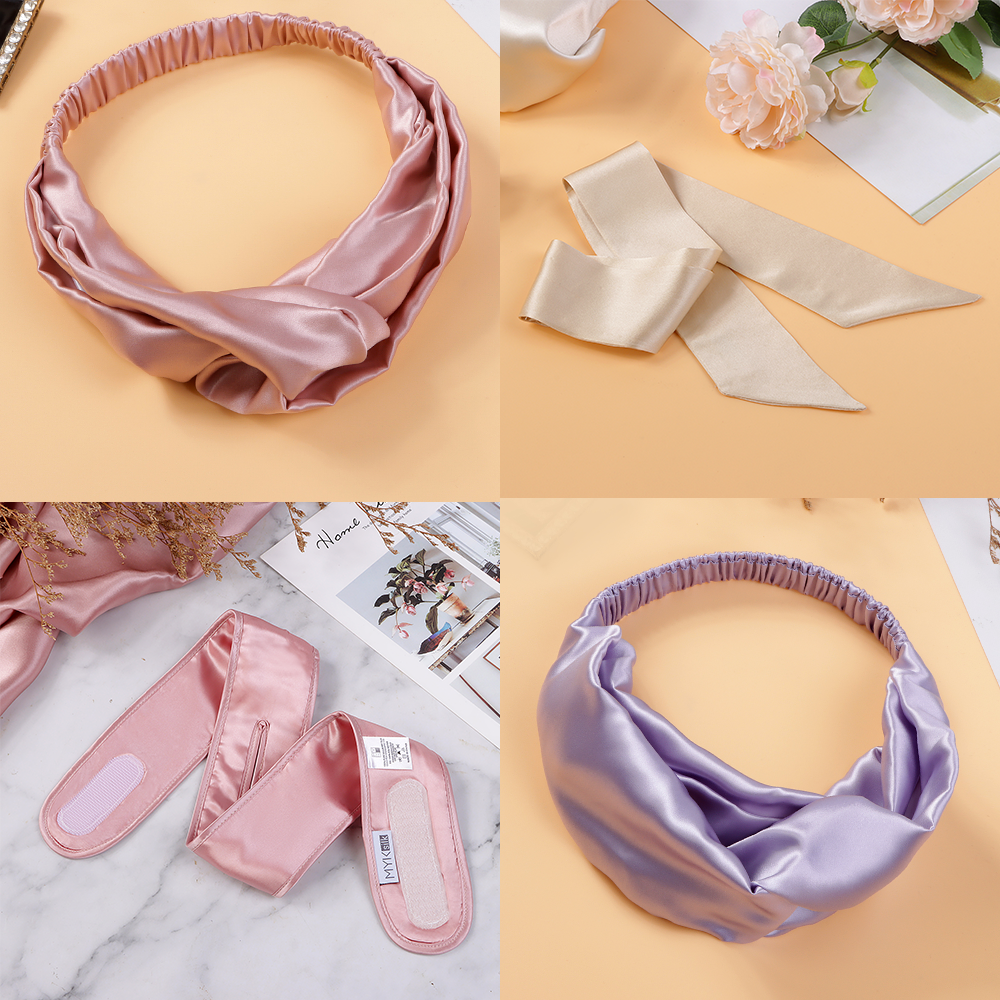An In-Depth Guide at How to Care for Your Silk
How to for Care for Your Silk
Hesitating to buy silk because you’re afraid it’s too delicate and impossible to wash? Don’t worry; you don’t need a private laundry service or a dry cleaning expense account to take great care of silk. Of course, like all good things, a little bit of effort is involved, but silk is easy to take care of as long as you know what to do (and what not to do).
Selecting Your Detergent
This is at the top for a reason. When washing silk, you need to use the correct detergent: while most silk care instructions just say to use “a gentle detergent,” you may not know what “a gentle detergent” means. It does not imply a detergent with no scents or dyes. An unscented, hypoallergenic, all-purpose detergent will destroy silk as severely as a regular, blue, scented detergent if it contains the wrong ingredients.
The detergent you use must not have protease, enzymes, alcohol, bleach, or any alkalines in it: these will dissolve silk and any other protein-based natural fabric, such as wool. So when clothing directions say to use a gentle detergent, they mean a detergent without those ingredients.
In general, this means you need to avoid any detergent that boasts of its stain-fighting prowess: these detergents are made to remove proteins, which means they’re also intended to murder your silk. For example, nearly every laundry pod made will damage silk thanks to a chemical used in the pod’s coating.
So, what can you do? Well, the easiest option is just to use baby shampoo. The only issue with using baby shampoo is you can’t put it into a washing machine - hand wash only.
For machine washing, the best option is to pick a dedicated detergent for delicate items: Woolite was the standard-bearer for years, but many other newer detergents work just as well, along with a ton of silk specific detergents.
Ensure that the detergent you use says it’s safe for silk, and always remember to spot test first to make sure your chosen detergent won’t damage your silk.
Storing Your Silk to Avoid Wrinkles
The qualities that make silk wonderfully smooth also make it wrinkle easily if it isn’t stored correctly. The best way to keep it? Just hang it up in a closet: this will stop it from crushing and get rid of minor wrinkles all on its own. Also, the darker the closet, the better. All-natural fabrics will break down a little bit in direct sunlight, and silk is no exception.
Now, the choice of hanger is also pretty important. For example, many wooden hangers are treated with dyes and finishes that can leech out and discolor your clothing. If you place the ultra-smooth and slippery silk onto a slippery plastic hanger, your things are going to end up on the floor. So how do you deal with it? Use a no-slip, non-wooden hanger.
Ironing Out the Tough Wrinkles
If you happened to store your silk incorrectly, you might have some seriously stubborn wrinkles. It’s ok, you can iron silk, but you need to be a little careful: the key is to use the lowest setting on your iron. The setting is often called “Silk.”
Turn your silk item inside out, get it a tiny bit damp, and iron it gently but quickly. If you are worried about making a mistake while ironing, you can either use a steamer or hang your silk items from a hanger inside the bathroom while taking a hot shower.
Do I Need to Dry Clean This?
There are three ways to clean your silk: Dry Cleaning, Hand Washing, and Machine Washing. Different silk items have different care requirements, so you need to think a little when you decide to wash your silks. Most silk items are generally acceptable to hand wash or machine wash with the proper detergent (all MYK items are fine for hand washing or machine washing), but there are times you should dry clean.
The first thing you need to do is check the label: if your item says “Dry Clean Only,” then you really should obey it. On the other hand, if it just says “Dry Clean,” then you actually might have some leeway, as that’s just a recommendation.
First, spot test your silk: use a little water and see what happens. If the color runs, then you should dry clean it. This is more common when the silk has dark, patterned designs or certain natural dyes. If the spot test is clean, your next step is to think about the item’s design: the more complex and delicate the design, the better the idea is to dry clean.
Lastly, the more stained the item is, the better the idea is to dry clean - minor stains can come out quickly enough, but significant stains can be hard to remove without dry cleaning.
My Silk Doesn’t Require Dry Cleaning, How Should I Wash It?
Congratulations on not having to dry clean. You have two options: you can hand wash your silk or you can machine wash it. Hand washing requires a little more effort but will preserve your silk’s smoothness longer, while machine washing is way easier but can, over a more extended period, damage your silk.
I Want to Keep My Silk Beautiful Forever; How Do I Hand Wash it?
Hand washing is quick and easy: get a container (even the sink will work just fine), add a little water and detergent, then soak your silk for a minute or two. Next, move the silk around a little bit, then leave it to sit another couple of minutes, remove it, and rinse. If you want to go that extra mile, add a little bit of hair conditioner to some water and use that to do your final rinse.
I Live Dangerously, Machine Washing Forever!
Machine washing isn’t that bad, but it’s the harshest washing method. Make sure you wash it on cold and use the lowest, most gentle setting – this will usually be called “delicate.” In addition, if you’ve got a top-loading machine or want to be a little more careful, give your silk the required protection by putting it into a washing bag.
Ok, How Do I Dry This Thing?
Well, first off, don’t use a machine: drying machines, even on the lowest setting, produce heat, and you don’t want to heat silk. Instead, start by putting your silk on a towel, fold the towel, and gently press out most of the water.
To finish, just put it on a hanger over your tub or shower for an hour or two: silk dries quickly. But, most importantly, don’t sundry it. Like we said earlier, the sun can fade and damage natural fabrics.
I Have a Stain, What Do I Do?
Most stains can be removed easily: mix up a simple stain remover by combining 2 cups of water with 2 cups of lemon juice or white vinegar. Put a little bit onto the stain, rub it gently, and then wash like normal.
Oil stains are going to be a bit trickier, and it’s crucial to act quickly. First, scrape away the oil that hasn’t yet soaked in with a towel, then quickly get some talcum powder and pour it onto the oil mark. Leave it overnight, then gently brush the talcum powder away and wash your silk item.
On a side note, don’t try spot treating silk: you’ll end up with a water stain. Instead, it’s best to simply wash the entire thing when you’ve got a stain.
We hope this guide has helped you understand how to care for your silk. If you have any additional questions, please feel free to contact us. Have a silky smooth day!



